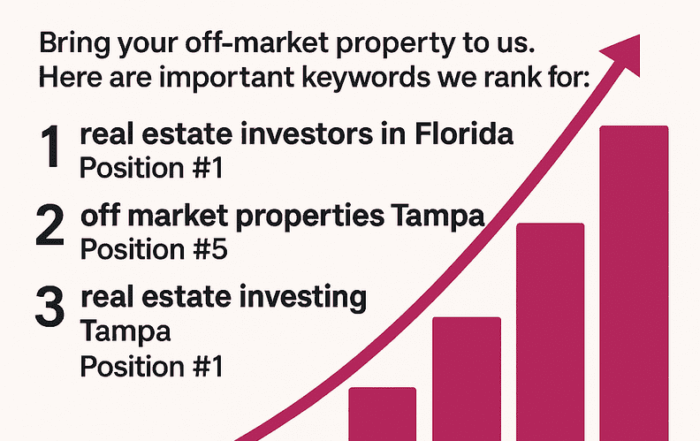
Let me give you the full list of creative ways I’ve personally used—or helped my students use—to finance renovations when the original loan is already in place and there’s no built-in funding.
1. Bridge Loan in Second Position
This is always the first move I try.
Once I close on a Subject-To deal and have the deed in my name (or into a trust or LLC if that’s how we structured it), I go to one of my private lenders and say:
“Hey, I’ve got a house with $120K left on the mortgage, and I need $30K to renovate it. Can you give me a bridge loan in second position?”
That means the private lender gets a second mortgage behind the existing one. It’s secured, documented, and the lender earns a fixed return—usually between 10-12% interest.
Why do they agree?
Because they know I’ve done my numbers. I’m showing them:
-
Purchase price
-
Rehab cost
-
ARV (After Repair Value)
-
Exit strategy (flip, rent, refinance)
And they trust me because I’ve done this hundreds of times. The key is transparency and having the experience to back up your plan.
Pros of Bridge Loans:
-
Fast funding (sometimes within days)
-
Doesn’t interfere with the original mortgage
-
Allows full rehab control
Cons:
-
Not every lender is comfortable being second
-
Slightly higher interest rates
-
Need to show a solid exit plan
But if your numbers are right and the deal has juice, it’s often a no-brainer.
2. Wraparound Mortgage (Wrap Loan)
Now, let’s say the private lender says:
“Nah, I don’t want to be in second position.”
No problem. We just get a little fancier.
I go back to them and say, “Okay—what if I give you a first position wraparound mortgage instead?”
Here’s how it works:
Let’s say:
-
The original mortgage is $120K at 4%
-
I need $30K for renovations
-
The house will be worth $200K after rehab
I ask the new lender to lend me $150K at 8%. That’s $120K to keep paying the existing mortgage, and $30K for me to use on the rehab.
They get a first-position mortgage on the property. I, the investor, agree to pay them one monthly payment that includes:
-
Enough to cover the original loan
-
Their profit margin
Then I handle the rehab, finish the project, and either flip or refinance to pay them back.
Why this works:
-
The lender has more control and security
-
You still avoid traditional financing
-
The deal is still creative and flexible
I’ve done wraps on flips, BRRRRs, and even long-term holds. It’s a powerful tool when your lender is cautious but you know your numbers.
3. Use Novation and Keep the Seller on Title
Now we get into the Jedi-level creative stuff.
Sometimes, I meet a seller who wants to do a Subject-To deal, but they’re still unsure about transferring title right away. Or maybe there are tax reasons why staying on title helps them.
So instead of fighting that, I lean into it and structure it as a novation agreement.
In this setup, the seller stays on the title, and we draft an agreement where I manage the renovation and eventual resale or refinance.
It’s like a handshake deal, but legally binding.
But here’s where it gets REALLY powerful…
If the seller is still the legal owner, they can:
-
Apply for a second mortgage themselves
-
Take out a personal loan or HELOC
-
Leverage their own credit profile to fund the rehab
And you, the investor, do the actual work.
So I might say:
“Mr. Seller, I’ll handle the rehab and sale. You apply for a $30K second mortgage with your local credit union. Once the house is fixed up, we’ll split the profits—or I’ll refinance you out.”
It’s brilliant because the seller is doing the part you can’t (borrow under their name), and you’re doing the part they can’t (fix and flip the house).
4. Add Equity Sharing for Seller Incentive
Want to sweeten the pot for a hesitant seller?
Offer them a small equity share in the upside.
If the seller is worried they’re handing over a valuable property too cheap—or they just like the idea of participating—you can propose something like:
“Let’s do 5% of the future profits after resale. You don’t lift a finger, but you get paid when I do.”
This could be structured as:
-
5% of net flip profit
-
5% equity in the future refi
-
A flat $5K bonus after a successful exit
It builds goodwill and makes negotiations smoother. And trust me—when you’re dealing with motivated sellers, that little carrot can go a long way.
5. Use a Combination Strategy
Here’s the magic sauce: You don’t have to pick just one.
Some of my best deals used a mix of these tactics, like:
-
Subject-To + novation + seller equity + private lender for appliances
-
Wraparound loan + seller loaning back funds with a promissory note
-
Bridge loan + rehab credit from contractor (yes, that’s a thing too!)
The key is being creative AND responsible. Know your exit strategy. Know your numbers. Know your backup plan if the market shifts.
Case Study: One of My Real Deals
Let me walk you through a real example from about 3 years ago.
We picked up a duplex via Subject-To. The seller had fallen behind and just wanted out. The loan balance was around $168K, and the place needed about $40K in work.
Here’s what we did:
-
Got the deed Subject-To
-
Used a bridge loan in second position for $40K
-
Offered the seller $5K at closing and another $5K after I flipped it (bonus equity)
-
Repaired, rented, and refinanced it in 6 months
-
Total all-in cost: ~$213K
-
Refi appraisal: $285K
-
Pulled out about $50K in equity, tax-free
That was a textbook creative deal, but the structure only worked because I had experience, trusted lenders, and a seller who was open to creative terms.
And guess what? That seller referred me to two of their friends.
What If You Don’t Have a Lender Yet?
That’s the other part people always ask me:
“Jorge, what if I don’t have a private lender?”
Start with this:
-
Ask around in your network
-
Talk to other investors
-
Go to REIAs
-
Join online forums and groups
-
Offer secured, win-win returns
Your first lender doesn’t need to be a millionaire. They just need to believe in the deal—and in you.
And if you need help, that’s what we do inside Property Profit Academy. We teach students how to build relationships with lenders, get scripts, templates, and even investor calculators so you can pitch the deal with confidence.
Final Word from Jorge
Listen—I’ve bought, flipped, rented, and refinanced properties in almost every market since the early 2000s. I’ve done this through housing crashes, market booms, pandemic lockdowns—you name it.
If there’s one thing I know, it’s this:
Creative financing is the key to building a real estate empire without being rich.
You just need to master the tools:
-
Subject-To
-
Bridge loans
-
Wraparound mortgages
-
Novation
-
Seller partnerships
-
Equity shares
And once you understand how to structure these deals the right way?
You’ll start seeing deals where others see dead ends.
So the next time someone says, “You can’t buy that, you don’t have the cash,” just smile and say:
“Watch me.”
If I can help, reach out. This is what I love doing.
Keep it consistent, stay patient, stay true—if I did it, so can you! Ready to connect and strategize? Contact me at graystoneig.com/ceo – Jorge Vazquez, CEO of Graystone Investment Group & its subsidiary companies and Coach at Property Profit Academy.
Pick your expert. Book your free 15-minute consult now. We are here to help!
Our Top Articles
The Best Cash-Flowing Markets Are Not the Best BRRRR Markets
A new investor asked me this online today: “Jorge, what’s the best cash-flowing market for the BRRRR strategy?” I [...]
Why Affordable Properties Are Still the Smartest Way to Build Wealth in 2025
By Jorge Vazquez, CEO of Graystone Investment Group Introduction: Picking Up Where We Left Off So, you [...]
Why You Should Sell Your Deals with Us
Let’s keep it real—wholesaling ain’t easy. You lock up a deal, hustle to find a [...]
Property Profit Academy:
✔ Learn to buy properties with little to no money down.
✔ Build a $10M portfolio step by step.
✔ Master strategies like BRRRR and house hacking.








